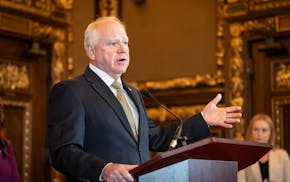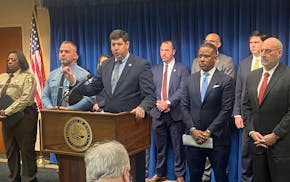Earlier this week, South Washington County Schools banned a substitute teacher from its classrooms after he allegedly re-enacted George Floyd's murder during classes at Woodbury High School.
The teacher — identified as Steven Dwight Williams by city officials in Prescott, Wis., where he'd served on the police force — had been hired by the district through a substitute staffing service called Teachers on Call. A spokeswoman for Teachers on Call said Williams is no longer an employee and had cleared a "rigorous screening process" that goes beyond standards set by the Minnesota Department of Education.
So what are the state requirements to be a substitute teacher in Minnesota?
A bachelor's degree and a background check
Most substitutes qualify with a three-year, short-call substitute teaching license (the type of license Williams has) that requires a bachelor's degree in any area. Applicants are not required to have completed a teaching degree.
Amid widespread substitute shortages during the COVID-19 pandemic, the state's teacher licensing board suggested schools preemptively license every staff member with a bachelor's degree, including janitors and nurses, to increase the pool of possible substitutes.
Individuals apply for a substitute license online through the state's Professional Education Licensing Board (PELSB) and must mail in a completed fingerprint card. The state Bureau of Criminal Apprehension uses that fingerprint card to run a criminal background check. If a background check is flagged, it will be forwarded to PELSB's ethics department for further review. According to PELSB's website, the board "strongly urges all applicants to be completely forthcoming on their application and to submit any supporting documentation for any items which will be flagged by the BCA."
PELSB is "unable to share background check results with applicants or school districts," according to its website.
If the applicant clears the background check and provides proof of a bachelor's degree, a substitute license is issued and emailed. The whole process can take up to 30 days, according to PELSB.
In Minnesota, the rest of the hiring protocol for teachers and substitutes is largely left up to individual school districts, and they sometimes opt to use staffing agencies like Teachers on Call.
In some cases, schools have hired teachers with a history of problematic or predatory behavior.
Short-term vs. long-term qualifications
A short-term substitute license allows a substitute teacher to teach for as many as 20 days in the same classroom. Long-term subs must have a full-time teaching degree in the content area.
The state also offers separate licenses with different requirements for short-call substitutes in career and technical education.
A recent pilot program for short-call subs allows applicants to apply jointly with a public school district or charter school. Those applicants are not required to hold a bachelor's degree and must be provided district training. Substitute licenses awarded through the pilot program are valid through the end of June 2025 and are not currently renewable.

Accomplished climber, photographer who recently moved from St. Paul missing on mountain

Walz: State had no advance notice of federal raid in Minneapolis

DOGE cuts federal money for upgrades at Velveeta plant in New Ulm

Five members of Minneapolis Highs street gang found guilty of racketeering conspiracy

